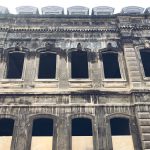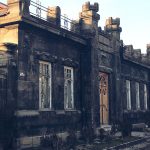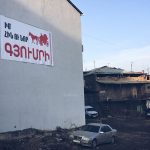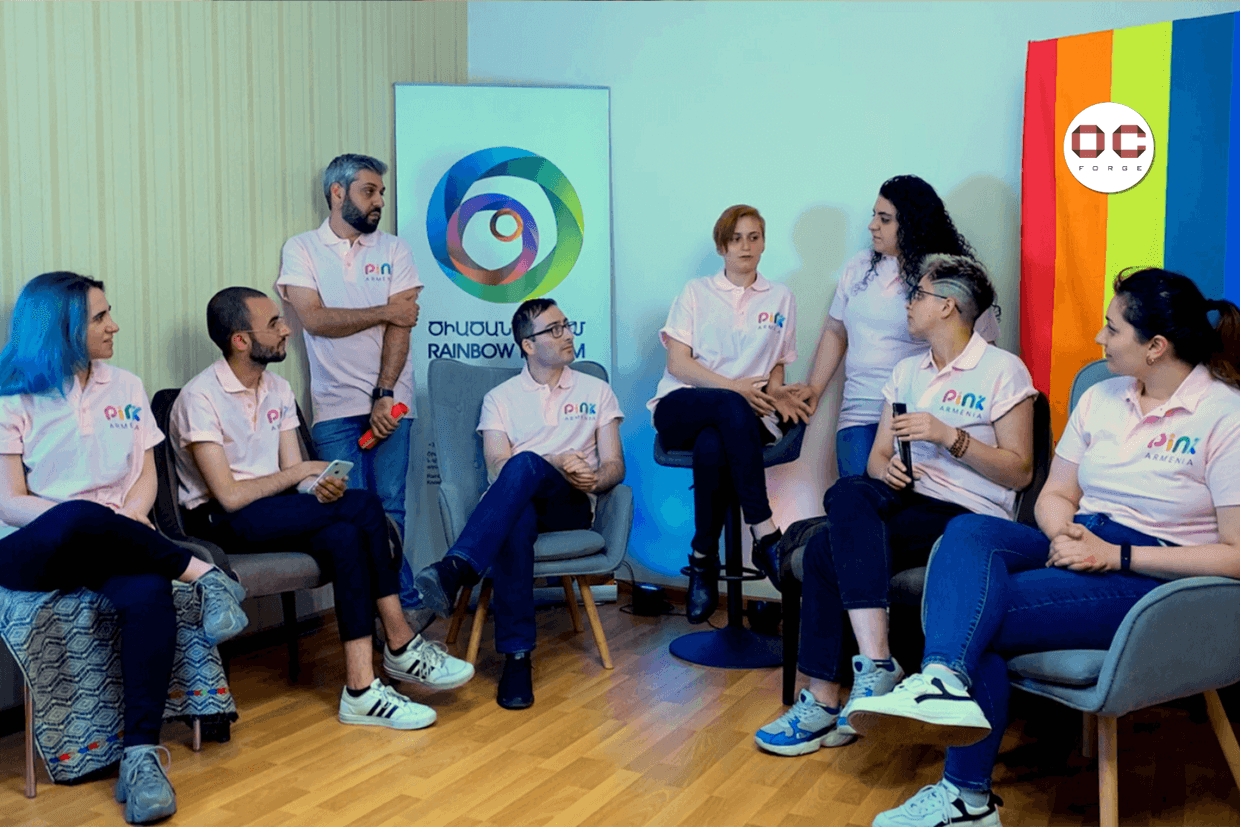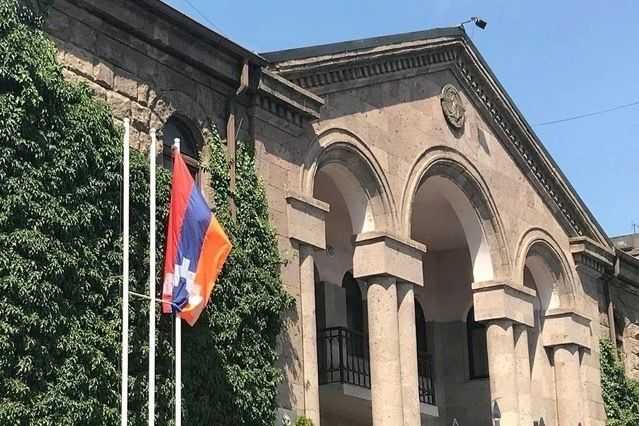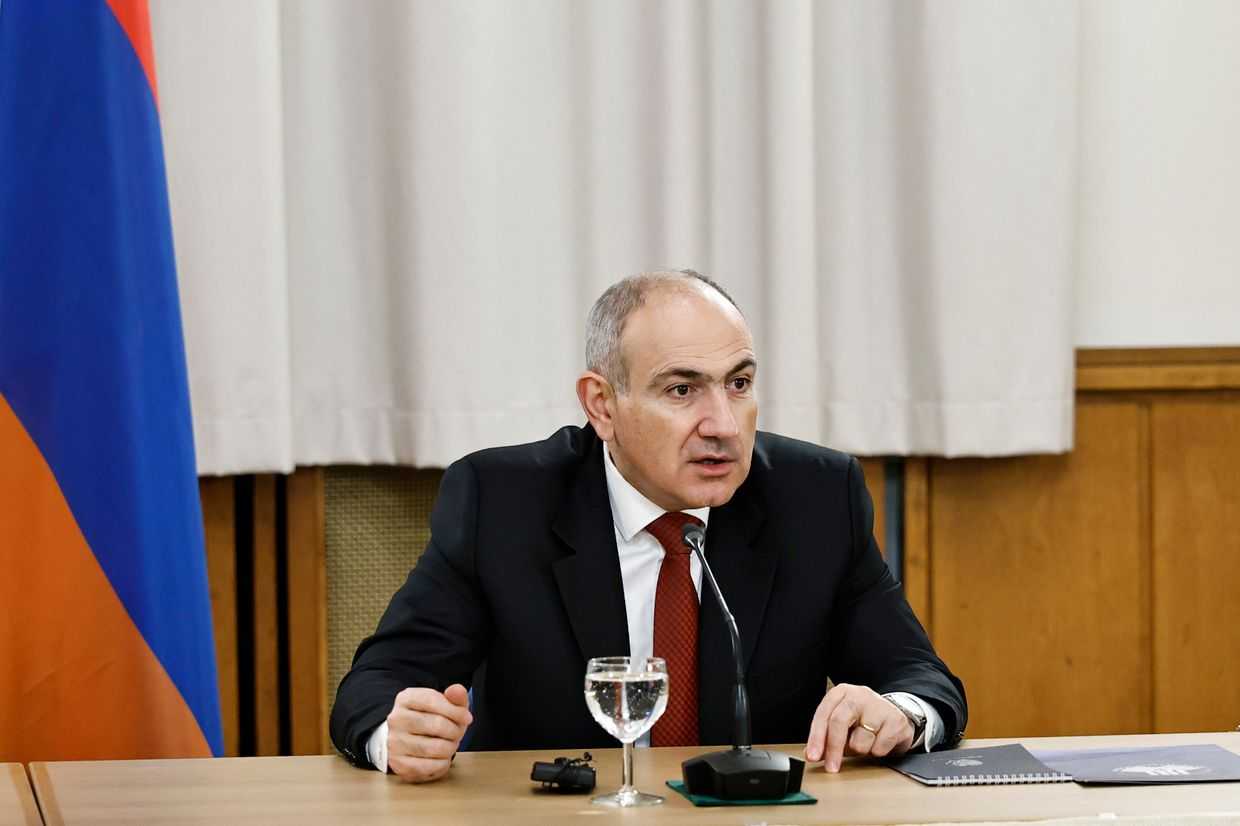
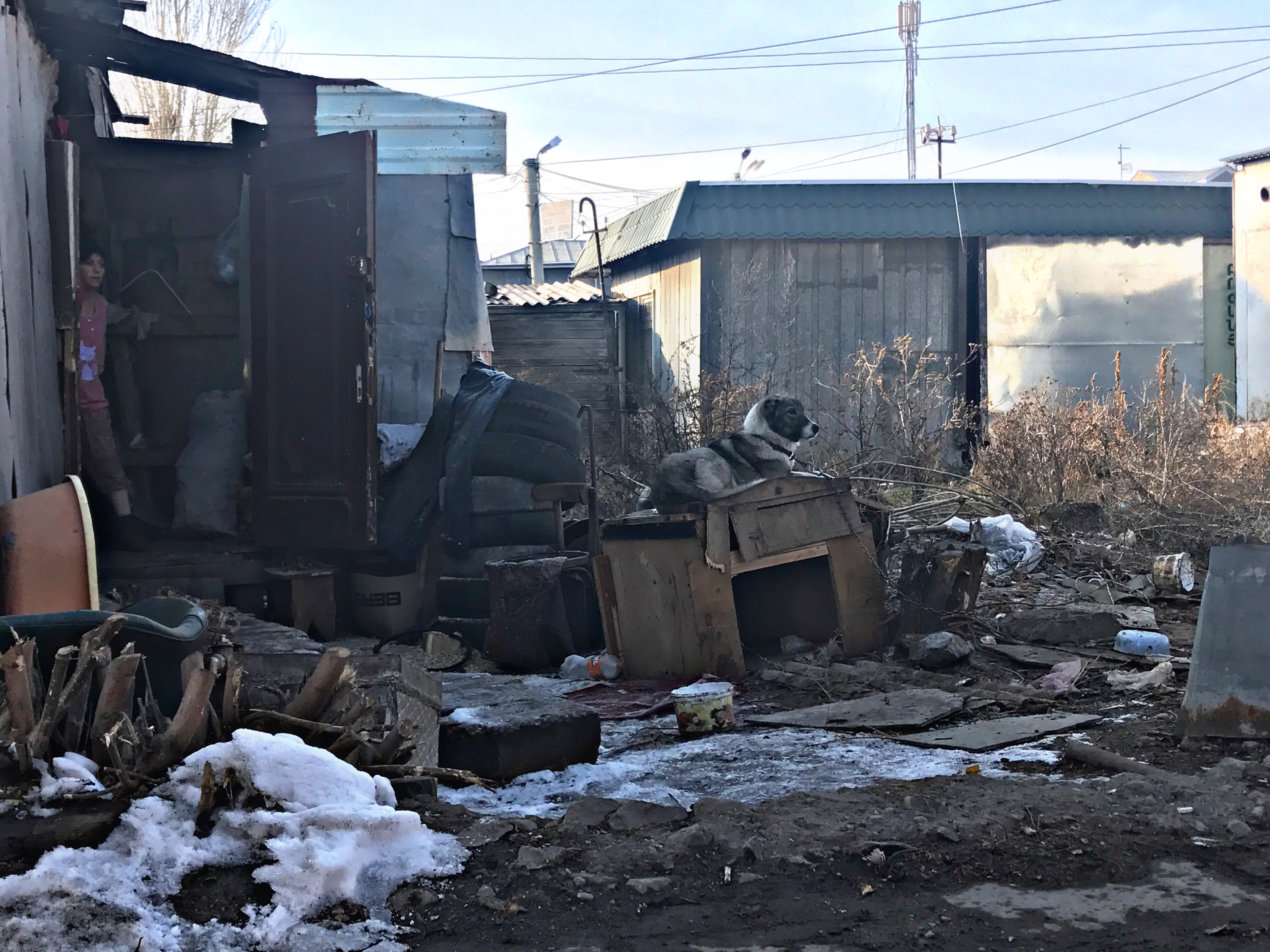
 The devastating earthquake of 1988 has left a lasting mark on Armenia’s second city. Despite reconstruction projects, Gyumri’s ‘temporary’, dilapidated trailers are still home to thousands. As these families remain unable to break the cycle of poverty — the city centre is receiving an expensive facelift.
The devastating earthquake of 1988 has left a lasting mark on Armenia’s second city. Despite reconstruction projects, Gyumri’s ‘temporary’, dilapidated trailers are still home to thousands. As these families remain unable to break the cycle of poverty — the city centre is receiving an expensive facelift.
Living in squalor
Nine square metres of living space, no toilet, semi-dilapidated walls, and a roof — the Grigoryan family’s house is like 3,000 others in Gyumri erected after the earthquake that hit northwest Armenia in 1988.
‘We got married 20 years ago. In 1988, my family home was destroyed, and my husband’s family also lost their house. After our wedding, we bought this little house hoping we would settle here temporarily, but our lives took another course’, 42-year-old Syuzanna Grigoryan tells OC Media.
In the first two years, the couple say they didn’t mind so much the conditions, but after the birth of their first child, the situation changed.
Their son is now 18 and they have a 15-year-old daughter.
‘We divided the house into two parts: my son and daughter sleep in one part, and my husband and I in the other. Our bedroom, kitchen, and living room are the same room. We don’t even have a bathroom, just a toilet outside. And we have to boil water for bathing and washing’, Syuzanna says.
Both she and her husband have health issues, so they’ve lost hope of earning enough money to buy a flat. Syuzanna doesn’t expect the government to give her a house, because she’s not officially registered as homeless. The couple spend almost all the money they earn selling firewood to provide a better future for their children. Their son is to become a mathematician, and their daughter a singer, Syuzanna says.
‘There are many people in Gyumri living in such houses, and not everyone can afford to heat their homes with natural gas or electricity, so they buy lots of wood. But they can only pay after their benefits or pensions come in. Life is very hard’, Syuzanna says.
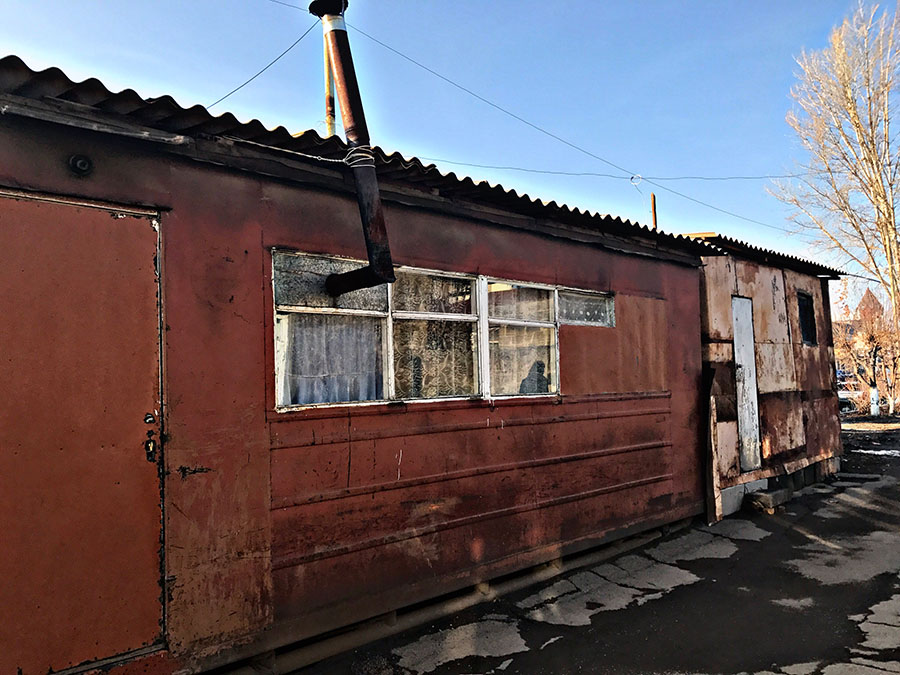
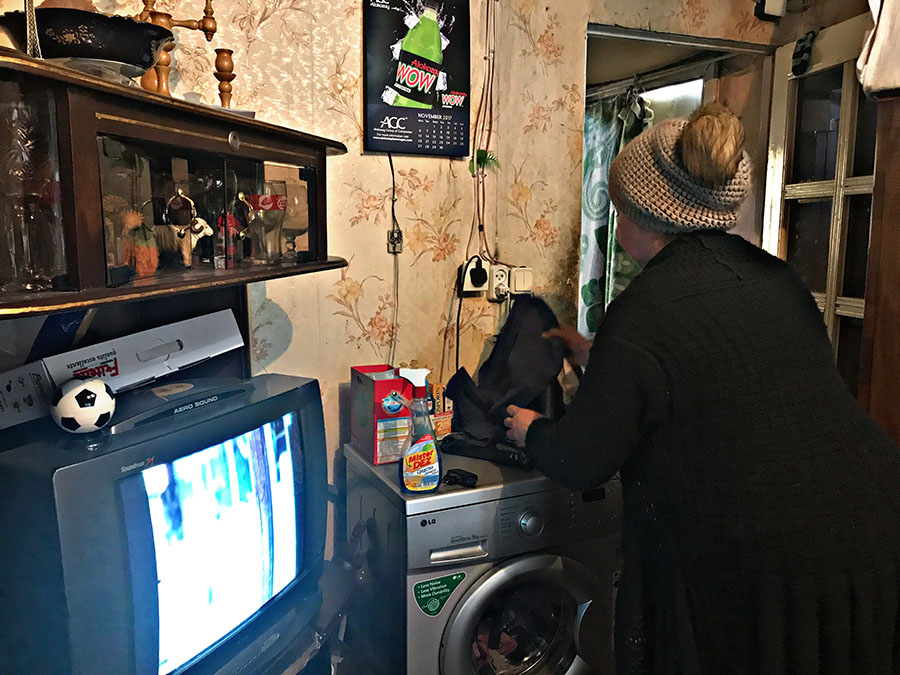
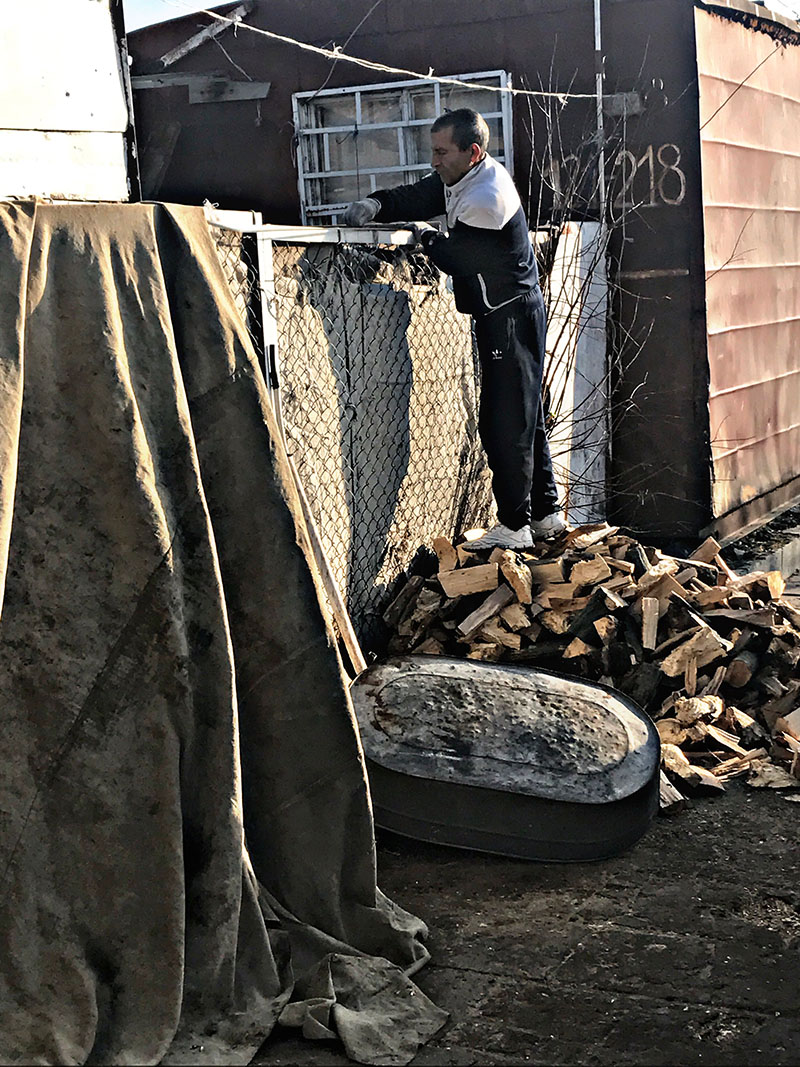
A city in poverty
Gyumri is located in Armenia’s north-western Shirak Province, the poorest region in the country. According to the National Statistical Service, in 2016, about 46% of the population of Shirak was below the poverty line — living on less than $2.5 a day. Statistics for 2017 are not yet available, but are unlikely to change.
‘Poverty in Gyumri is evident. About 2,000 families live in temporary trailer homes, and about 300 families in semi-dilapidated dormitories, the conditions of which are worse than in the trailers’, Vahan Tumasyan, head of the Shirak Centre, tells OC Media.
The Shirak Centre, a non-governmental organisation, has been operating since 2006, and thanks to various benefactors has been able to provide flats to dozens of homeless people. They also donate firewood, clothing, and food to poor and homeless families in Gyumri.
‘Nowadays Gyumri has two faces; the districts in the backstreets seem to be in a completely different reality. It is mainly the lowest stratum of society that lives here’, Tumasyan says.
He says the situation is truly tragic, talking of often seeing children being orphaned and mothers forced into prostitution.
Government reconstruction
On 7 December, 1988, a 6.8 magnitude earthquake devastated northern Armenia. According to official data, the earthquake took 25,000 lives, leaving hundreds of thousands homeless. Damages to property were estimated at $10 billion.
The Shirak Regional Administration told OC Media that 20,612 homes were destroyed in the earthquake. They say that by 2016, 21,184 new flats had been handed out, 575 more than the number destroyed.
Immediately after the earthquake, the Soviet authorities announced plans to completely restore Gyumri within 2 years. But when the Soviet Union collapsed in 1991, work on the reconstruction of Gyumri came to a halt.
In 1994, the government of the newly independent Armenia adopted a disaster zone rehabilitation programme aiming to fully reconstruct the city by 2001. The project succeeded only partially, and several other projects were subsequently carried out to fill in the gaps.
The last state housing construction programme was launched in Gyumri in 2008, and proceeded in several stages. The first houses were handed out in 2010.
Despite the reconstruction projects, families displaced by the earthquake have grown over the past thirty years, and the reconstructed flats have not been enough to fully house them. With a shortage of new affordable housing, many have stayed or moved back to the trailer homes and dormitories, bringing the cycle of poverty full circle.
Staying behind
‘I was living in a trailer for 22 years. It’s hard to imagine what kind of torture it is to live in a trailer. When we received our house, I almost died from happiness. I was taken to a stone house with a normal toilet, gas, electricity, and water — away from the rotten trailer full of rats and a roof always leaking’, Karine Karapetyan recalls.
That year, 1,056 flats were completed in Gyumri’s Mush 2, a suburban district of the city. Another 1,756 flats were built in the second stage of this project.
‘My neighbour from the trailer district got a house in the second stage of the housing distribution. Their house was better, neater, and good materials were used. There were things in our house that my husband had to repair, but there were no such problem in the new buildings’, says Karine.
Karine, who has been living in this home for 8 years now, notes that their family was small when they received the flat — it consisted of four people and they were satisfied with the housing conditions.
‘We got a three-room flat, as we had lost such a flat [during the earthquake], and it was very good for us. But my neighbour who had lost a two-room flat 22 years ago… Her family became larger and could not fit in a 2-room flat. Half of them could move in to the building, the other half stayed in the old district — in the trailer’, says Karine.
Thousands of flats have been built and handed out in Gyumri, with newly built districts in both the central areas of the city and in the suburbs. However, no new flats have been built in the trailer settlements.
Permanent temporary housing
Albert Margaryan, head of the Urban Development Department of the Shirak Regional Administration, says there is not a single person still homeless because of the earthquake.
He explains that that some people still live in temporary houses because their families have grown since the earthquake. He says they were given flats equal to the ones they lost during, but as their families became larger, only some of them could move to the new government-provided flats, while the rest had to stay in the temporary housing.
‘It means part of the family remains homeless, but unfortunately, they were not eligible to receive a flat’, Margaryan tells OC Media.
He claims some families sold their new flats and moved back into the temporary housing.
‘Here, the government is guilty of not being entirely consistent or not giving adequate compensation to people, while families are sometimes guilty of receiving a flat, selling it, and then spending all the money and still living in these rotten trailers’, says Tumasyan.
The government programme giving out flats has now come to an end.
A historic centre restored
‘The Government has a complex programme for Gyumri, and the quality of life in this city will definitely change. We must work every day, so that life here changes. We are overcoming the problems in Gyumri, and our people just have to look to the future with optimism and work’, Prime Minister Karen Karapetyan announced at a press briefing in Gyumri on 7 December.
The government say they want to develop tourism in Gyumri. Repair works are being carried out in the city’s Kumayri Reserve, a historical and architectural open air museum founded in 1980, located in the historic heart of the city.
The district is populated exclusively by the rich. Covering more than 1,000 hectares and with around 1,200 monuments, the houses here were built mostly in late 19th century. Many Soviet films were shot here, and in the early 1980s, plans were drawn up to renovate the reserve, but the earthquake disrupted these plans.
Now, the renovation has been given a second chance. Private investors have bought the semi-dilapidated buildings and repaired them. The Prime Minister’s own family invested $500,000. The programme to develop two streets in Gyumri will last for two years.
There are already tourists walking these streets, but most are unaware of the other face of Gyumri.

